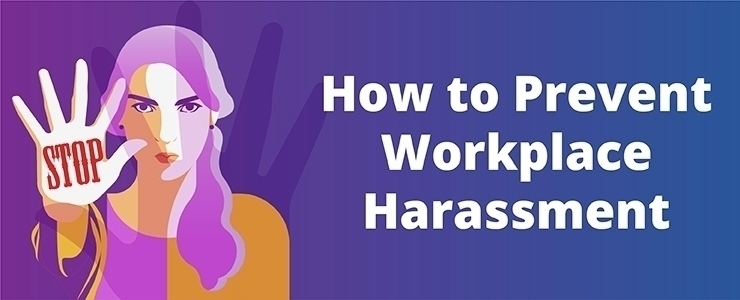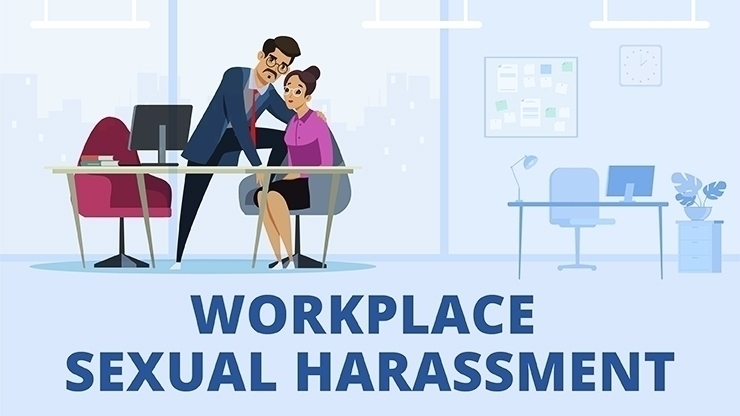What is Harassment?
Harassment is a disturbing, recurring behavior that infringes on one’s rights. It can occur anywhere, including workplaces, schools, online platforms, or social gatherings. Harassment types include sexual, verbal, and non-verbal harassment, involving derogatory comments, unwelcome advances, or threats, resulting in a hostile environment. Understanding Sexual harassment’s nature is essential for fostering respectful relationships. Preventive measures involve adopting clear policies, regular training, and encouraging open dialogue. Your knowledge empowers you to address harassment effectively, ensuring everyone’s safety and dignity.
Why is knowing about harassment important?
Understanding harassment is paramount in promoting safe, respectful, and inclusive work environments. Knowledge of harassment empowers individuals to identify and call out such behaviors, thus preventing potential harm. Awareness is the first step toward establishing zero-tolerance policies in workplaces, educational institutions, and social circles. It enables victims to seek justice and support and instigates accountability for the perpetrators. Furthermore, it paves the way for open discussions and educates individuals about their rights and responsibilities, fostering mutual respect and dignity. Therefore, knowing about harassment is a crucial step toward a safer society for all.
Examples of sexual harassment that you need to know
Here are some examples of sexual harassment you need to know:
Quid pro quo: Quid pro quo harassment refers to situations where job benefits—such as promotions, raises, or continued employment—are directly linked to the employee submitting to unwelcome sexual advances or conduct. This Latin term translates as “this for that”, underlining the transactional nature of the harassment.
Hostile Work Environment: This includes all such activities that make it difficult for a person to feel threatened or prevent them from carrying out their work.
A hostile work environment can take several forms. For example:
Unwelcome Physical Touching: This includes inappropriate touching, patting, or pinching without consent, or unnecessary closeness and physical interference with movement.
Bullying: This covers physical and non-physical activities that attempt to prevent a person from carrying on their duties
Verbal Harassment: This can take the form of lewd comments, sexual jokes, or unwelcome comments about a person’s body, clothing, or appearance.
Nonverbal Harassment: This includes unwelcome gestures, leering, or the display of sexually suggestive objects, pictures, cartoons, or posters.
Sex-based discrimination: When rewards are given to those who respond to sexual advances, while others who do not comply are disadvantaged.
Online Harassment: This can occur via emails, text messages, social media platforms or any electronic media that can be used to post information of a harassing nature over the Internet.
How to protect yourself from workplace harassment?
Protecting yourself from workplace harassment involves several proactive steps:
Understand Your Rights: Familiarize yourself with the laws, regulations, and company policies concerning workplace harassment. Understand what constitutes harassment and that everyone has the right to a safe, respectful workplace.
Document Incidents: If you experience harassment, document each incident carefully, noting down the date, time, place, people involved, and nature of the harassment. This record can be valuable if you need to report or prove the harassment.
Establish Boundaries: Make it clear when a comment, joke, or action is unwelcome. Direct communication may deter the perpetrator.
Speak Up: If you are comfortable doing so, confront the harasser directly and ask them to stop the behavior. Sometimes, individuals may not realize their behavior is offensive.
Seek Support: Discuss the situation with trusted colleagues, friends, or family. They can provide advice and emotional support, and, if necessary, corroborate your experience.
Report the Harassment: If the behavior persists, report it to your supervisor, human resources, or another authority figure in your organization. Provide them with your documented evidence.
Get Professional Help: If your workplace doesn’t adequately address the issue, you might need to seek legal advice. In some cases, a lawyer, union representative, or an ombudsperson can provide guidance on the next steps.
How to report workplace harassment?
Reporting workplace harassment can be a challenging process, but it is an important step to ensure your safety and well-being at work. Here’s a guide on how to report such incidents:
Document the Harassment: Maintain a detailed record of each harassment incident, noting the date, time, location, individuals involved, and what exactly happened. Save any relevant emails, texts, or other forms of communication as evidence.
Speak Up: If comfortable and safe, tell the harasser directly that their behavior is inappropriate and unwelcome.
Consult Your Employee Handbook: Most companies have procedures in place for reporting harassment. Check your employee handbook or company policies for guidelines.
Report to Supervisor: If your immediate supervisor is not the harasser, report the incident to them. Provide as much detail as possible.
Inform Human Resources: If your supervisor is the one harassing you, or if they fail to take appropriate action, take your complaint to the HR department. Submit a formal, written complaint detailing the harassment incidents.
Keep Records: Document every step of the reporting process, including when you made the report, who you reported it to, and what action was taken.
File a complaint: If your complaints aren’t addressed as per the company policy, you should consider taking legal action, and report the harassment to authorities.
Top 5 Benefits of a Harassment-Free Workplace
Increased Productivity: When employees feel safe and respected, they are more engaged, focused, and productive. Harassment-free workplaces foster a positive atmosphere where staff can concentrate on their tasks without fear of being demeaned or threatened.
Improved Employee Morale: A respectful and inclusive work environment boosts employee morale. This positive sentiment fosters teamwork, creativity, and dedication, all of which contribute to the overall success of the organization.
Reduced Employee Turnover: Harassment can lead to high turnover rates. In contrast, a harassment-free workplace encourages employee retention, saving costs associated with hiring, training, and lost productivity during transitions.
Enhanced Company Reputation: Businesses that prioritize a harassment-free work environment are seen as ethical, caring, and progressive. This reputation can attract top talent and also appeals to clients and customers who value responsible business practices.
Legal Protection: Employers that proactively address and prevent harassment mitigate the risk of costly lawsuits, legal fees, and penalties. Compliance with laws protecting employees from harassment also demonstrates the company’s commitment to fair and just practices.

Why do most Harassment programs fail?
Most harassment programs fail due to the following reasons:
Inadequate Training: Training that only covers the basics or is viewed as a compliance requirement rather than a tool for change can lead to ineffective results. Effective training should be interactive, regular, and tailored to the specific needs of the organization.
Lack of Leadership Commitment: Without strong, consistent support from leadership, harassment programs may not receive the resources or seriousness they need. Leaders need to show that they are committed to addressing the issue and setting a respectful tone in the workplace.
Ineffective Reporting Mechanisms: If employees don’t trust the reporting process, they won’t use it. Mechanisms that are overly complex, lack confidentiality, or result in retaliation against the victim are likely to fail.
Poor Enforcement of Policies: If policies are not enforced consistently and transparently, employees may come to view the program as ineffective or biased. Fair, consistent enforcement is crucial to maintaining trust in the program.
Insufficient Support for Victims: Many programs focus on punishing harassers without providing sufficient support for those who have been harassed. A lack of support can make victims feel isolated and hesitant to report further incidents.
Organizational Culture: Even the best harassment program can fail if it’s implemented in toxic workplace culture.
How to make your harassment training more effective?
Effective harassment training is crucial for promoting a respectful and safe workplace. Here are several strategies to enhance the efficacy of your harassment training programs:
Leadership Involvement: It’s crucial for leadership to actively participate in training sessions. This shows that the company takes harassment seriously and that the behavior is unacceptable at all levels.
Tailored Content: Customize your training to reflect the realities of your workplace. Use examples and scenarios that are relevant to your employee’s job roles and experiences.
Interactive Training: Use interactive techniques to engage employees, such as role-playing, group discussions, case studies, or quizzes. This encourages active participation and better comprehension.
Bystander Training: Incorporate bystander intervention strategies into your training. Empower employees to recognize harassment and understand how to safely intervene or report incidents they witness.
Clarify Reporting Procedures: Clearly outline the process for reporting harassment, ensuring employees know who to report to, what will happen after a report is made, and how the company will protect against retaliation.
Regular Refreshers: Don’t treat harassment training as a one-off event. Regular refreshers help reinforce the lessons and account for new hires or changes in company policy or legislation.
Professional Training: Subscribe to authentic online training programs. Look for programs that meet the standards set by your state. They bring expertise, objectivity, and credibility to the training program.
Evaluate and Adjust: Continually assess your training’s effectiveness, seeking feedback from employees. Use this feedback to adjust and improve future training.
What should be included in harassment training?
Harassment training should be comprehensive and designed to educate employees about what constitutes harassment, how to prevent it, and how to respond if it occurs. Here’s what should be included:
Definition and Types of Harassment: Clearly define what harassment is, and provide examples of the different forms it can take, such as sexual, verbal, physical, and online harassment.
Company Policy: Detail your company’s harassment policy, emphasizing its commitment to a harassment-free workplace. The policy should outline the consequences of violating this policy.
Legal Aspects: Cover the legal aspects of harassment, explaining the laws and regulations that apply to your organization and the potential legal consequences of harassment.
Reporting Procedure: Outline the steps to report harassment, including whom to contact, what information to provide, and what to expect once a report is filed. Make sure to highlight the protections in place against retaliation.
Role of Bystanders: Train employees on the role they can play as bystanders. Provide strategies for safe and effective intervention when they witness harassment.
Case Studies and Scenarios: Use real-life scenarios to help employees understand what constitutes harassment and how to handle such situations. This can involve role-playing exercises, discussions, or interactive quizzes.
Response and Investigation: Explain how the organization will respond to a harassment complaint, including how investigations will be conducted and how confidentiality will be maintained.
Resources for Support: Provide information about resources available for victims of harassment, such as counseling services, employee assistance programs, and legal aid.






